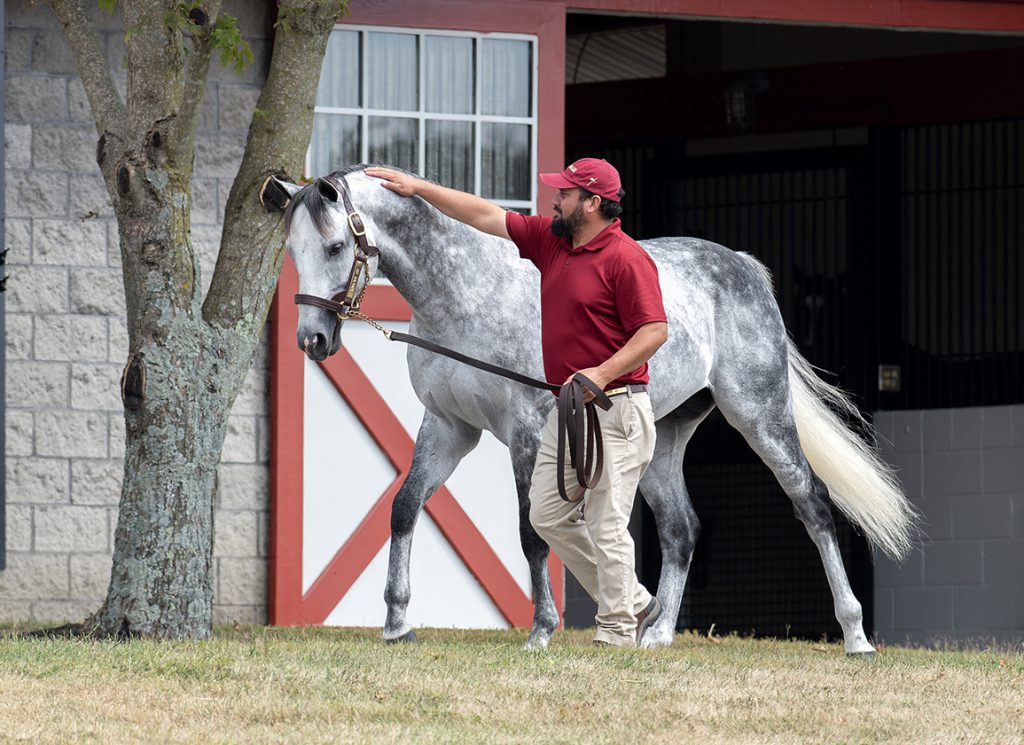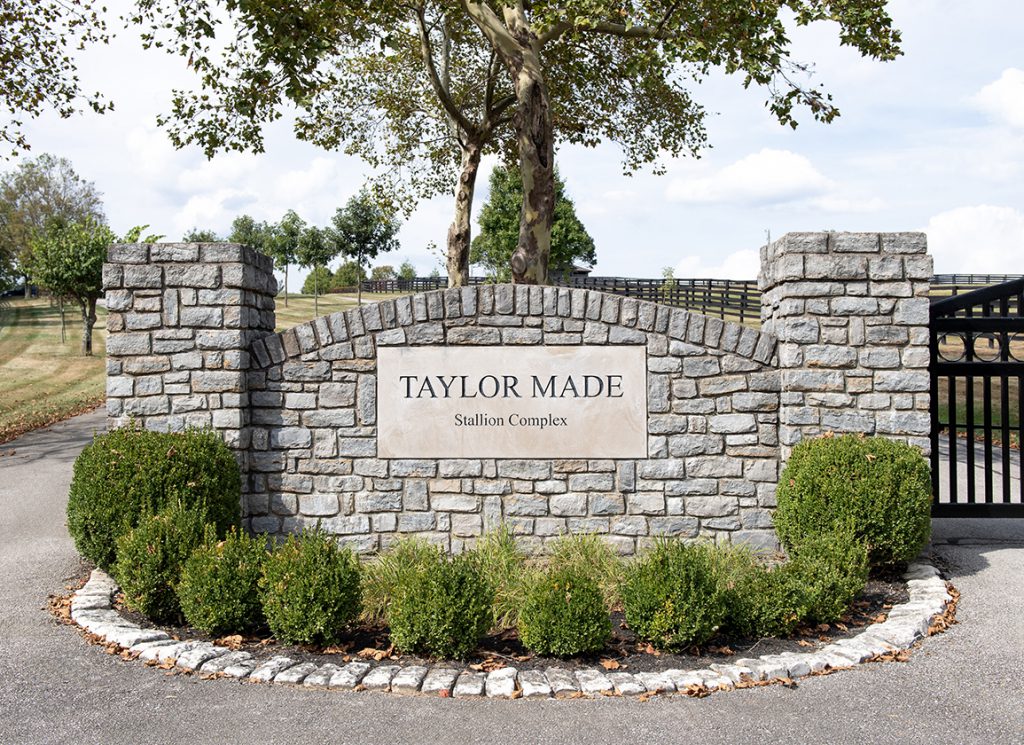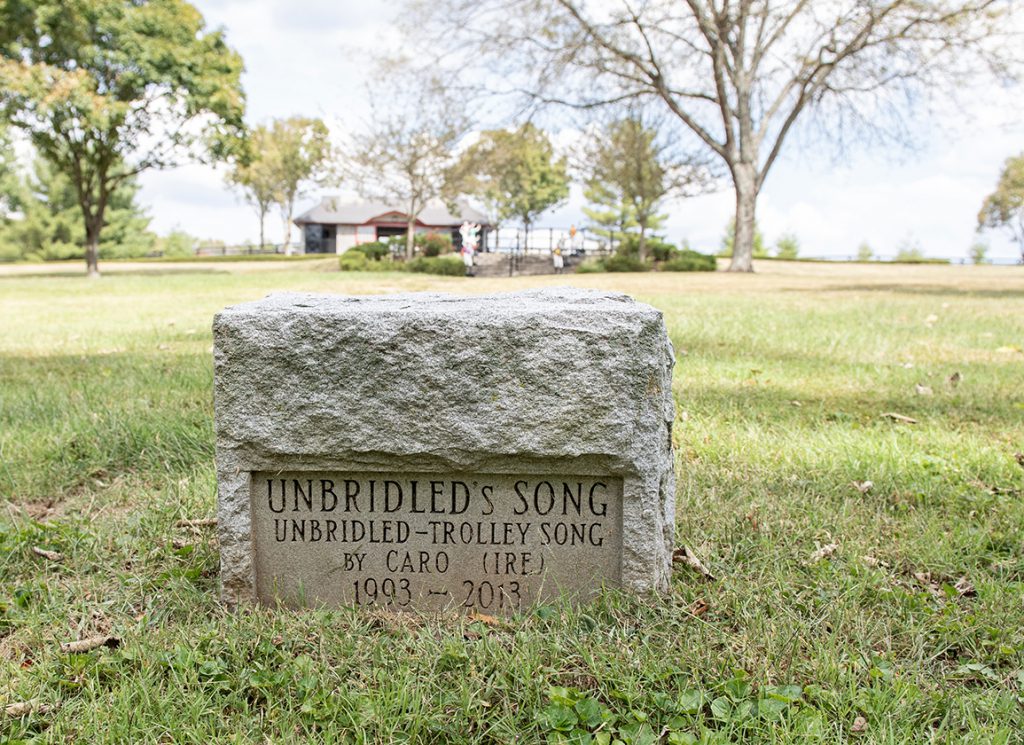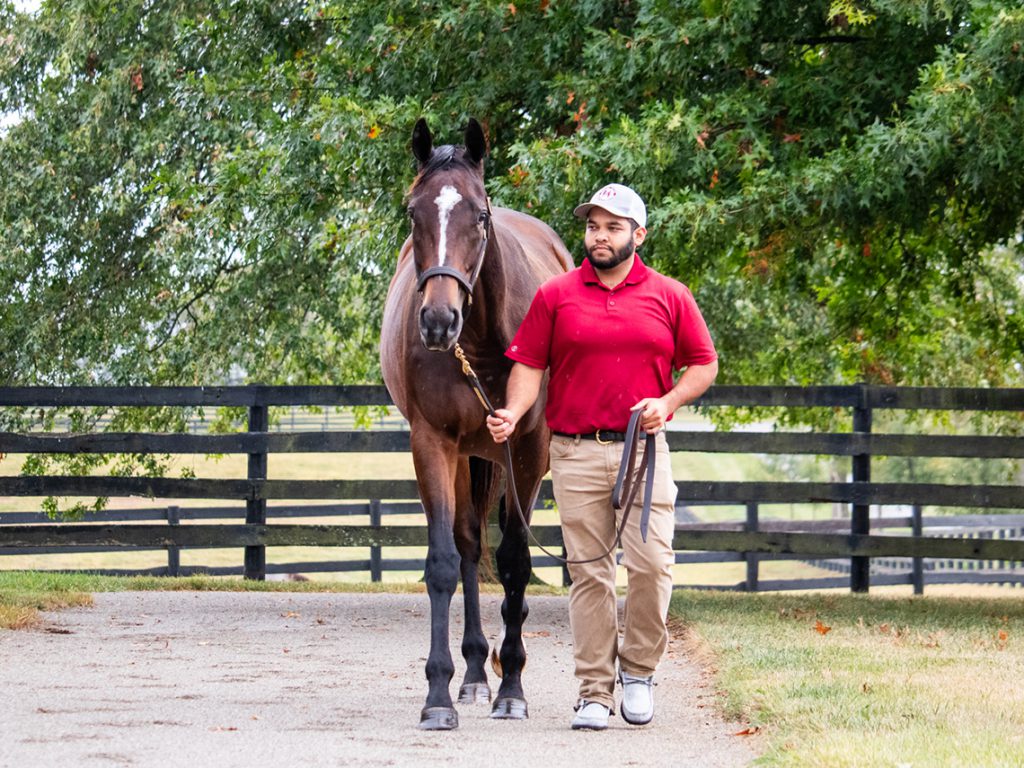Celebrating 40 Years of the Breeders' Cup
Can you imagine being a horse racing-crazy kid with a ringside seat to the creation of the Breeders' Cup? Mark Taylor can, because he was.
Fast forward more than four decades and now he is president and CEO of the Central Kentucky farm that is believed to have raised and/or sold more Breeders' Cup winners than any other. There's also the matter of having stood the Breeders' Cup winner who currently holds the record for siring the most Breeders' Cup winners in turn. And, oh yes, there's also Knicks Go, another Breeders' Cup winner, in the farm's stud barn right now, as well as a few in the fields. Yes, surely Taylor can be excused if his reverence for the Breeders' Cup might be even greater than usual.
“Listen, the [Kentucky] Derby is amazing, but if you're in this industry, the Breeders' Cup is the real deal,” said Taylor. “Every division: turf, dirt, 2-year-olds, 3-year-olds, older horses, all coming together and laying it all on the line.”
Taylor's father was the legendary farm manager Joe Taylor, whose fortunes coincided with that of Gainesway. Many will remember Gainesway under John Gaines and the elder Taylor together. At one point the farm on Paris Pike stood 40 stallions and bred over 2,000 mares a year. This was all the more remarkable considering it was in the days when stallion books were much smaller and reproductive work wasn't quite so advanced, often necessitating multiple covers per mare.
In addition to owning one of the most successful stallion stations in our sport's history, Gaines is also credited with the conception of the Breeders' Cup. Joe Taylor was at his side for all of it. Although they were farm owner and employee, the two men were far closer than that, said Mark Taylor.
“Mr. Gaines and my dad were like brothers in a lot of ways,” he said. “Mr. Gaines was a brilliant business guy and the visionary. My dad was the diplomat and the horseman. My dad was really gratified for Mr. Gaines when he got it all together and got the Breeders' Cup done. What an amazing thing.”

Knicks Go at Taylor Made | Sarah Andrew
Taylor said he was the youngest of eight kids and a young teenager when Gaines hatched the idea behind the Breeders' Cup.
“I feel like I got a front-row seat,” said Taylor. “I was the last kid still in the house in those years where the Breeders' Cup was really coming to fruition. I could hear my dad in there on the phone with Mr. Gaines and the two of them brainstorming.
“It was like political warfare, getting everyone on board. For Mr. Gaines to try to bring this concept to fruition he deserves some sort of Nobel Peace Prize. I don't know how he got it done.”
All these years later, Taylor still marvels at the unobstructed view he received.
“It's really amazing. I feel like of all the thousands and thousands of people in this industry, I got to see this and I was just a 13- or 14-year-old kid. I had a really unique view of this thing coming together. I was really into horse racing. I'd be waiting for the Blood-Horse or Thoroughbred Record every week, and the race results in the Herald-Leader every day. The TDN wasn't around yet.
“It was kind of cool watching it all come together. I love the Breeders' Cup. It's one of my favorite days of the year. Watching what it's become is really special.
“I'll never forget that first Breeders' Cup Classic. That wild stretch drive. I think it was more than Mr. Gaines could have dreamt up the way it came together.
“What a privilege to see it all come together.”
After witnessing something so special, no wonder Taylor–along with his older brothers–would later found Taylor Made Farm, today a diverse operation which has conquered the worlds of boarding, selling, stallions, and more. No fewer than 20 individual Breeders' Cup winners have been raised or sold by Taylor Made. Lest one think those eventual winners simply passed through sales barns, a full 11 of those 20 spent their formative years cavorting through Taylor Made pastures. Among those raised on Taylor Made's land were Triple Crown winner American Pharoah and leading sire Unbridled's Song. The latter also spent his entire stud career at Taylor Made and would sire six individual Breeders' Cup winners. Long before he sired a foal, Unbridled's Song was tied to Taylor Made.
“It's a long story,” said Taylor. “We had Unbridled's Song here on the farm when he was a weanling owned by Mandysland Farm. They were dispersing; ultimately he was bought by someone else and they took him to Saratoga where he sold as a yearling, but was sent back to Taylor Made for some R&R. Ernie Pargallo's Paraneck Stable and Buzz Chace bought him.
“Back then, Taylor Made sold 2-year-olds in training. We obviously didn't have a training center, so we were the marketing arm. I never will forget when Unbridled's Song breezed, he was just this big, gray monster. He breezed so effortlessly. As he crossed the line, the announcer said, 'He went so fast the infield trees swayed.'”
Unbridled's Song brought $1.4 million in 1995 at the Barretts March sale. At the time, it was a world record for a 2-year-old in training. However, there was a hitch. A chip was found in the colt's hind ankle and the buyer, according to Taylor, tried to negotiate a reduced price.
“We had an anxiety attack,” said Taylor. “Here we'd spent all this money going to California–we'd flown all the way to Barretts to sell him–and our big horse was being turned back. Ernie Paragallo said, 'Don't worry about it. We're going to win the Breeders' Cup with him.' The rest is history.”
Sure enough, Unbridled's Song did just that. About seven months later, he captured the GI Juvenile in a spectacular stretch duel with Hennessy.
“That was amazing. Of course, he came here [after his racing career], led the general sires list, and was a tremendous sire for us,” said Taylor. “He really put our stallion operation on the map. He had so much speed for a big horse and could carry it two turns. He also had such a sweet disposition, not a mean bone in his body.
“And he died with that chip in his hind ankle!”

Knicks Go with Ernesto Martinez | Sarah Andrew
Unbridled's Song passed away in 2013 at the age of 20. Another Breeders' Cup winner, 2021 Classic winner and 2020 Dirt Mile winner Knicks Go, is currently in the stallion barn.
“Several farms were after him, so the fact that we were able to get the horse was very exciting,” said Travis White, director of sales at Taylor Made. “It's not often you get a horse like that. For us he checked a lot of boxes. We feel so fortunate and excited to have him.
“The Breeders' Cup is the Super Bowl of our sport. Anytime you can get a horse of that caliber, the best of the best, proven on the world's biggest stage, it's a great addition to a stallion roster. You're going to attract the top breeders in the world.”
Knicks Go was just history's sixth horse to find the winner's circle in two different Breeders' Cup races, but there was almost a third Breeders' Cup win on his CV. It's often lost among the Eclipse championships and two championship day wins, but Knicks Go also finished runner-up as a 2-year-old in the 2018 Juvenile behind eventual champion Game Winner.
“I think a lot of people forget he was a Grade I winner at two and that he won or placed in three different Breeders' Cup races,” said White. “It is extremely rare for a horse to be as precocious as he was and then come back and win two different Breeders' Cup races as an older horse. Most horses have a niche–they can't go two turns, can't come from off the pace, have to have things go their own way–but he was able to do it all. Hats off to Brad Cox and his crew for doing such a great job with him.”
White said it's an honor to have Knicks Go in the stallion barn at Taylor Made. “Anytime you have a horse with his accomplishments and accolades, it means the world.”
Knicks Go isn't the only Breeders' Cup winner currently on the farm. The most high-profile Breeders' Cup-winning mare at Taylor Made at the moment is undoubtedly Blue Prize (Arg), winner of the 2019 Distaff and a $5-million purchase out of Fasig-Tipton by OXO Equine. However, it is Miss Macy Sue who holds pride of place.
Miss Macy Sue, a graded winner who was third in the 2007 Breeders' Cup Filly & Mare Sprint, had five foals to race. Four were stakes winners, including GI Breeders' Cup Dirt Mile winner Liam's Map (who is by Taylor Made's Unbridled's Song) and Not This Time, who was runner-up by a neck in the Breeders' Cup Juvenile and is now king of the stallion barn at Taylor Made.
“She is pensioned and still lives here,” said Taylor. “She is the grand dame of Taylor Made. Almost two Breeders' Cup winners. What an achievement. Stallions get to produce hundreds and hundreds of foals every year, but mares get one chance a year for maybe 10 or 15 years. For her to have that kind of strike rate in the Breeders' Cup is just incredible.”
Taylor Made has had a lot of significant moments in the Breeders' Cup, but there was one that might have been a little extra special. In the 2004 edition at Lone Star Park, two mares grazing in Taylor Made paddocks both had Breeders' Cup winners. Silken Cat and Goulash produced Sprint winner Speightstown and Distaff winner Ashado, respectively. Now the mares are buried next to each other at Taylor Made.
“Both were bred by Aaron and Marie Jones, long-time customers. That day was incredible,” remembered Taylor. “We raised them both here and they were on opposite ends of the spectrum price-wise. Speightstown was a $2-million Keeneland July yearling and Ashado brought $170,000 at Keeneland September. And yet they both turned into champions. Later we resold Ashado for a then world-record $9 million.”
It's probably safe to say Taylor Made's story in the Breeders' Cup is far from over. Whether future chapters will be written from the mare side or the sales division or even by horses standing in the stallion barn remains to be seen, but the touch of Taylor Made will likely continue to be felt alongside the Breeders' Cup. What could be more fitting for a kid with a front-row seat to the birth of racing's championship days?
The post Another Chapter in Taylor Made’s Breeders’ Cup Story appeared first on TDN | Thoroughbred Daily News | Horse Racing News, Results and Video | Thoroughbred Breeding and Auctions.





